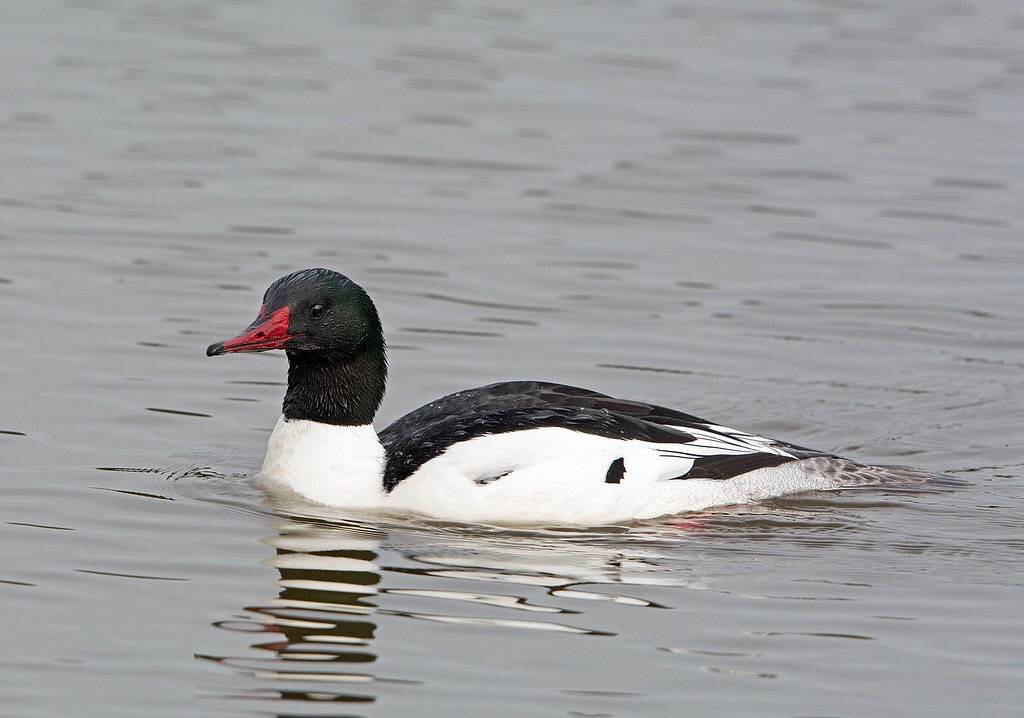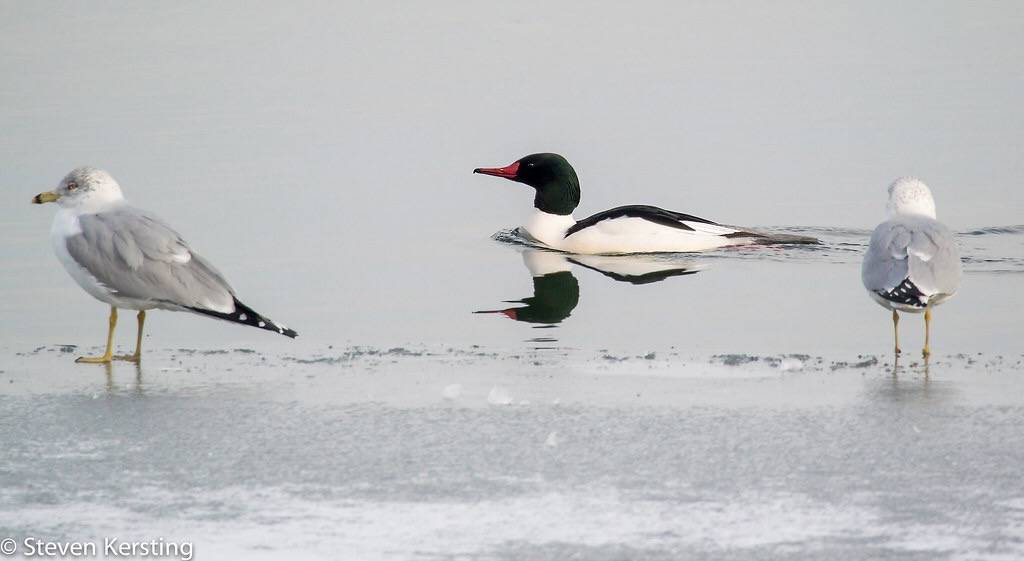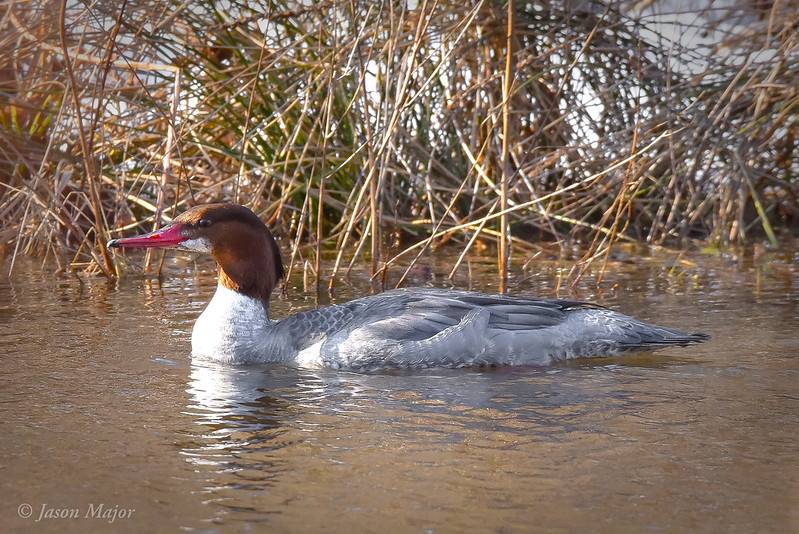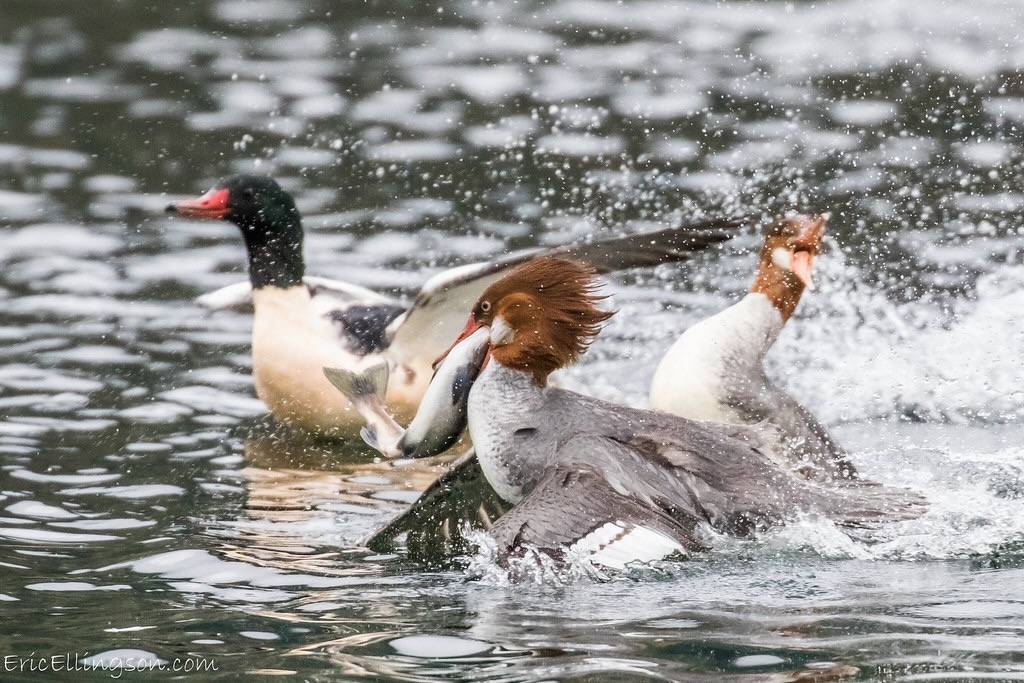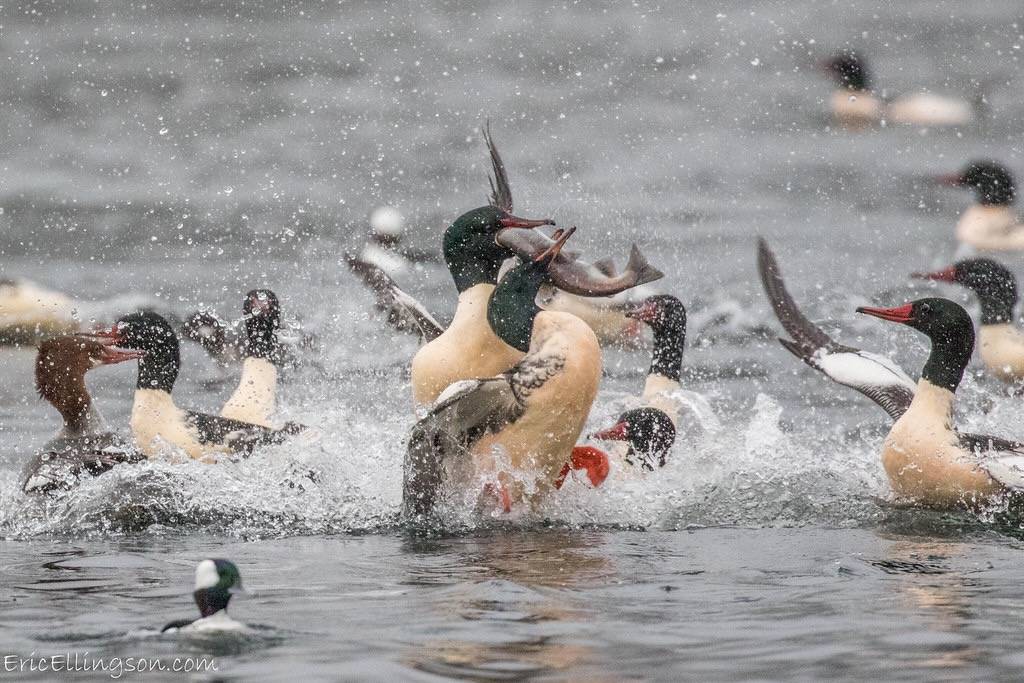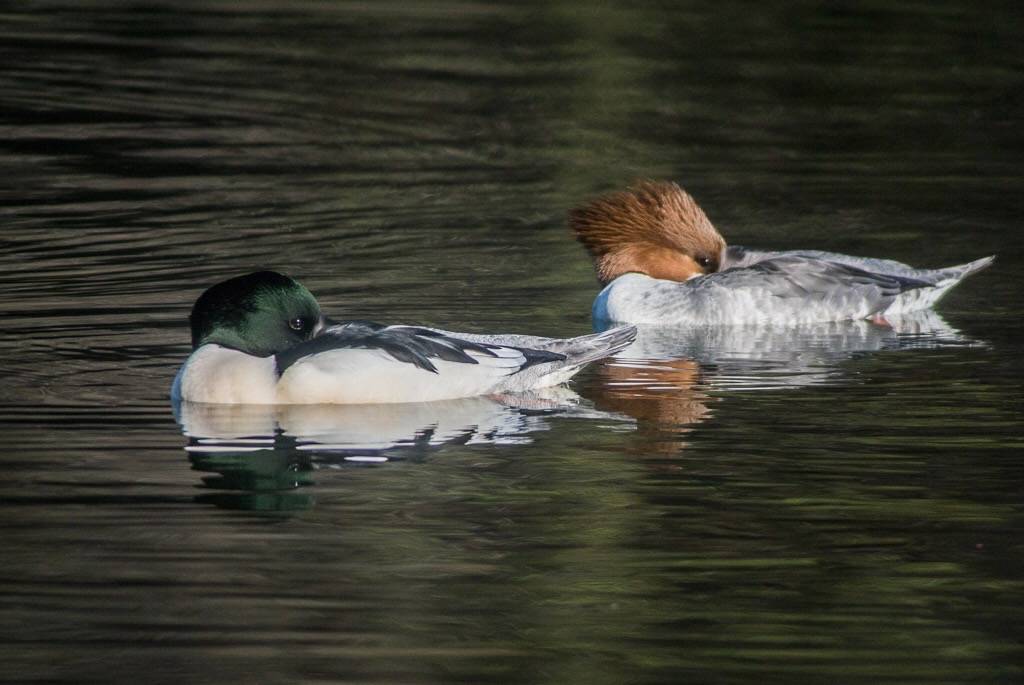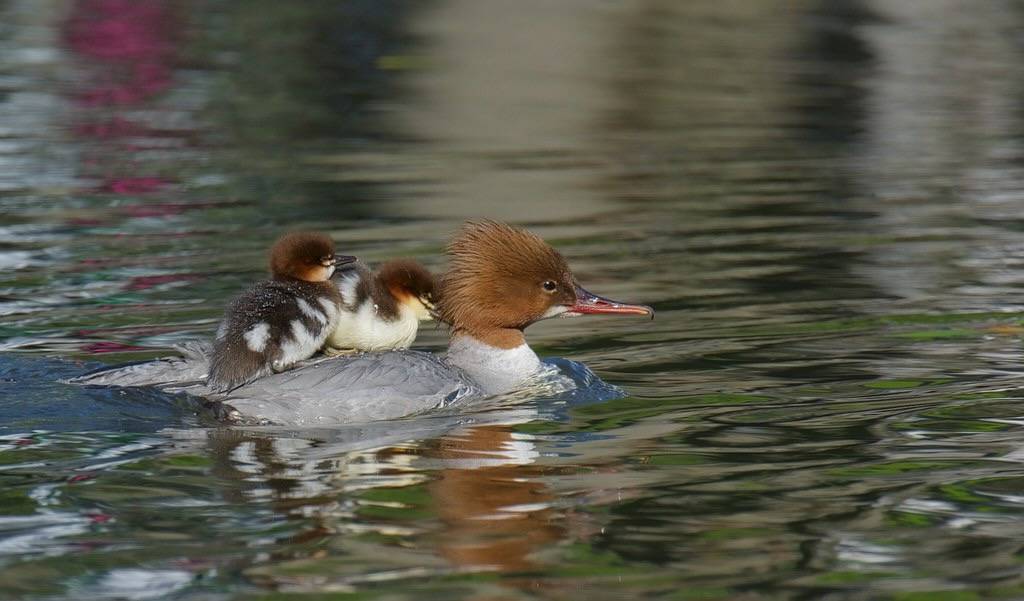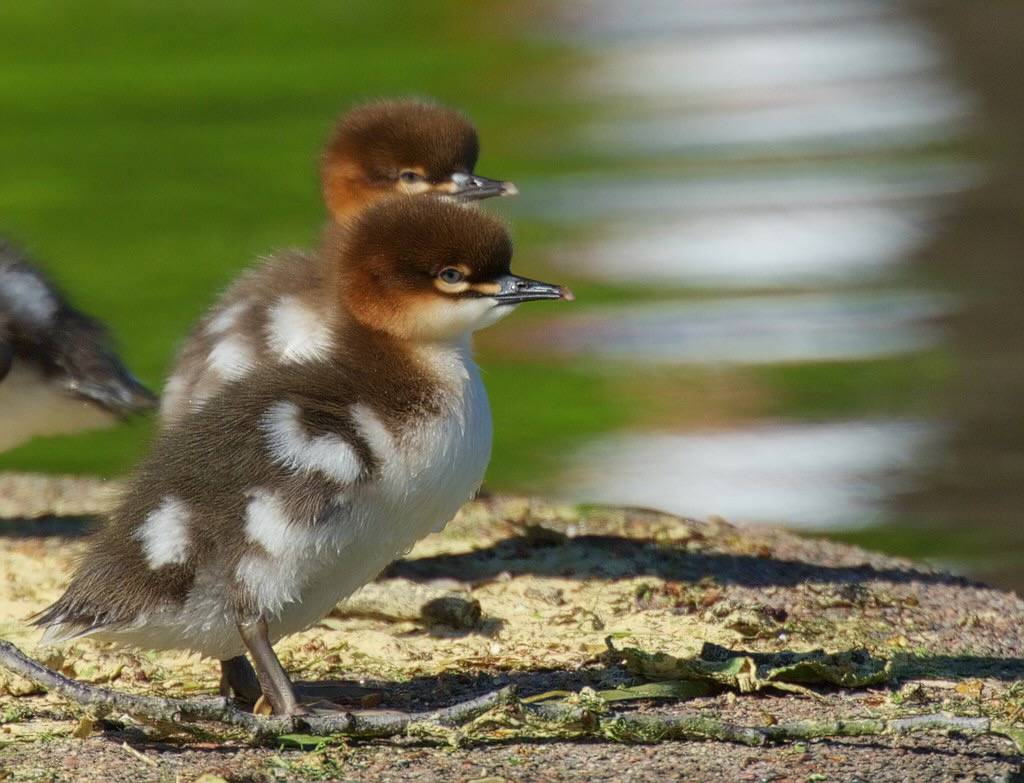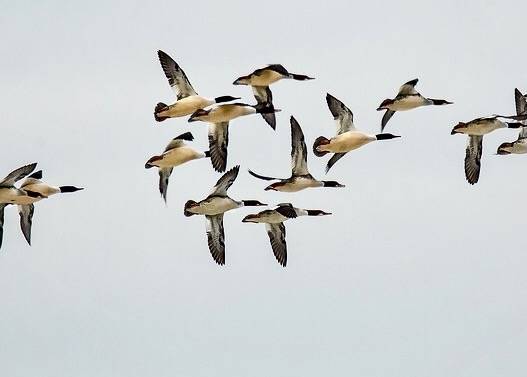Common Merganser
Bird data for the park started in 2002 but the Common Merganser was only first recorded in mid-December 2019. A pair was diving for fish in North Cove where freshwater from the Pawtuxet River mixes with brackish water. Observations have been more frequent since then, including a raft of nine birds in late February of 2023.
Despite what its name suggests, it has not been as common as either the Hooded Merganser or the Red-breasted Merganser, at least not at Salter Grove. However, it is the largest of the three wintering mergansers, a testament to the park's fish-filled water bodies.
Common Mergansers nest in natural tree cavities as well as in the old nests of large woodpeckers along rivers in the northern forests of North America, Europe, and Asia. These high-rise nest sites can be 100 feet off the ground and as much as a mile from water. A day after hatching, the flightless but precocial chicks are called by their female parent to leave the nest cavity. Talk about a leap of faith!
It winters south of the breeding grounds in large lakes and rivers that stay ice-free, and occasionally in coastal bays. Mergansers require clear water bodies because they hunt their prey by sight. They can stay underwater for up to two minutes but typical dives last for less than half a minute.
In European cities, where nest boxes have been provided, the Common Merganser has become a common nesting species along urban waterfronts.

